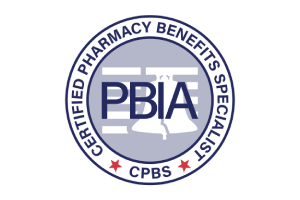In the dynamic landscape of healthcare, drug utilization management programs play a pivotal role in optimizing medication use, controlling costs, and ensuring patient safety. These programs encompass a variety of strategies, each designed to balance effective treatment with fiscal responsibility. This article delves into the key components of drug utilization management (DUM) programs, including step therapy, therapeutic substitution, mandatory generic enforcement, prior authorization, pill splitting, refill too soon, dose optimization, quantity limits, disease management programs, and formulary exclusions. For each strategy, we will outline its benefits and challenges.
- Step Therapy: Step therapy is a DUM approach that requires patients to try lower-cost or generic medications before accessing more expensive alternatives. This strategy aims to ensure cost-effective therapy without compromising patient outcomes. Benefits include cost savings for both patients and payers. However, challenges may arise when patients require immediate access to a specific medication due to clinical urgency.
- Therapeutic Substitution: Therapeutic substitution involves replacing a prescribed drug with an alternative within the same therapeutic class. This approach can reduce costs and promote generic utilization. Benefits include financial savings and increased competition among manufacturers. Challenges may arise if the alternative medication is not as effective for certain patients or if patients experience adverse effects.
- Mandatory Generic Enforcement: Mandatory generic enforcement requires patients to use generic versions of brand-name drugs when available. This strategy promotes cost savings by leveraging the lower prices of generic medications. Benefits include reduced prescription drug costs and enhanced financial sustainability. Challenges may arise if patients have concerns about the efficacy or safety of generic substitutions.
- Prior Authorization: Prior authorization mandates approval from the payer before specific medications are dispensed. This approach ensures appropriate use and cost-effective treatment. Benefits include preventing unnecessary utilization and controlling expenditures. However, challenges may emerge in cases of delayed treatment due to the approval process.
- Pill Splitting: Pill splitting involves prescribing higher-dose tablets that patients can split to achieve the desired lower dose. This strategy can reduce costs and promote adherence. Benefits include cost savings and improved medication adherence. Challenges may include difficulties in accurately splitting tablets and potential inconsistencies in dosing.
- Refill Too Soon: Refill too soon policies limit early refills to prevent medication misuse or overutilization. Benefits include preventing potential medication abuse and optimizing treatment adherence. However, challenges may arise if patients experience unexpected changes in treatment plans or dosage adjustments.
- Dose Optimization: Dose optimization involves adjusting medication dosages to align with evidence-based recommendations. This strategy improves medication effectiveness while minimizing adverse effects. Benefits include enhanced patient outcomes and cost savings. Challenges may include the need for careful monitoring during dosage adjustments.
- Quantity Limits: Quantity limits restrict the dispensing of medications beyond specific quantities over a defined period. This strategy prevents excessive use and stockpiling. Benefits include cost control and improved patient safety. Challenges may emerge if patients require larger quantities due to unique circumstances.
- Disease Management Programs: Disease management programs offer comprehensive care for patients with chronic conditions, integrating medication therapy with other interventions. Benefits include improved disease control, enhanced patient education, and reduced healthcare utilization. Challenges may include resource-intensive implementation and patient engagement.
- Formulary Exclusions: Formulary exclusions involve removing certain medications from the approved drug list to encourage the use of cost-effective alternatives. Benefits include cost savings and promoting rational drug use. Challenges may arise if patients require the excluded medication for clinical reasons.
Drug utilization management programs encompass a diverse range of strategies aimed at optimizing medication use while controlling costs. Each strategy offers distinct benefits, from cost savings to improved patient outcomes, but they also present unique challenges that require careful consideration. Balancing these factors is essential to achieving a successful DUM program that prioritizes both the financial health of payers and the well-being of patients.
Here’s a table summarizing each Drug Utilization Management (DUM) program, along with their benefits and challenges:
| DUM Program | Benefits | Challenges |
|---|---|---|
| Step Therapy | Cost savings for patients and payers | Potential delays in accessing necessary medications |
| Therapeutic Substitution | Cost reduction, increased competition | Variation in patient response to alternative medications |
| Mandatory Generic Enforcement | Cost savings, enhanced financial sustainability | Patient concerns about generic efficacy and safety |
| Prior Authorization | Appropriate use, cost control | Delayed treatment due to approval process |
| Pill Splitting | Cost savings, improved adherence | Accurate tablet splitting, dosing inconsistencies |
| Refill Too Soon | Prevention of medication misuse | Unforeseen changes in treatment plans |
| Dose Optimization | Enhanced efficacy, reduced adverse effects | Monitoring challenges during dose adjustments |
| Quantity Limits | Cost control, improved patient safety | Patient needs for larger quantities in unique cases |
| Disease Management Programs | Improved disease control, patient education | Resource-intensive implementation, patient engagement |
| Formulary Exclusions | Cost savings, rational drug use | Clinical necessity for excluded medications |
Please note that this table provides a concise overview of the benefits and challenges associated with drug utilization management programs. The actual implementation and outcomes of these programs may vary depending on specific healthcare settings and patient populations.

